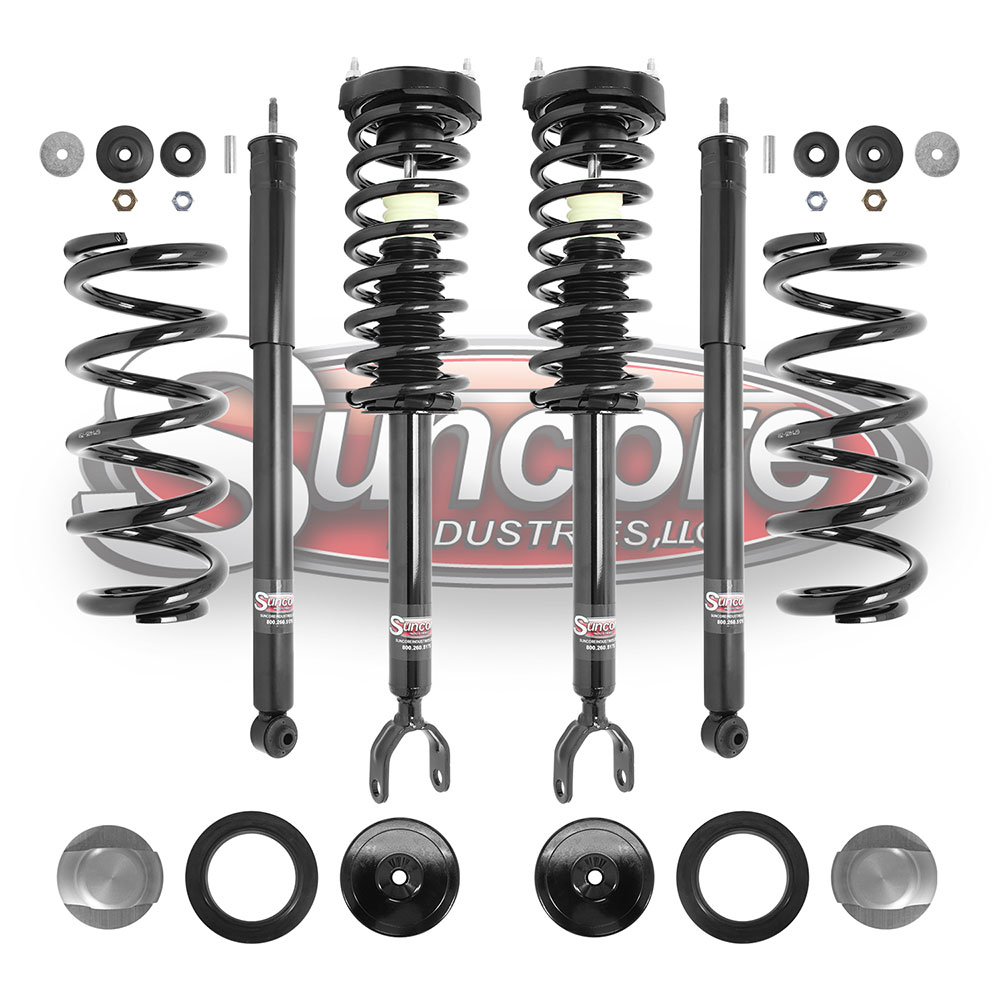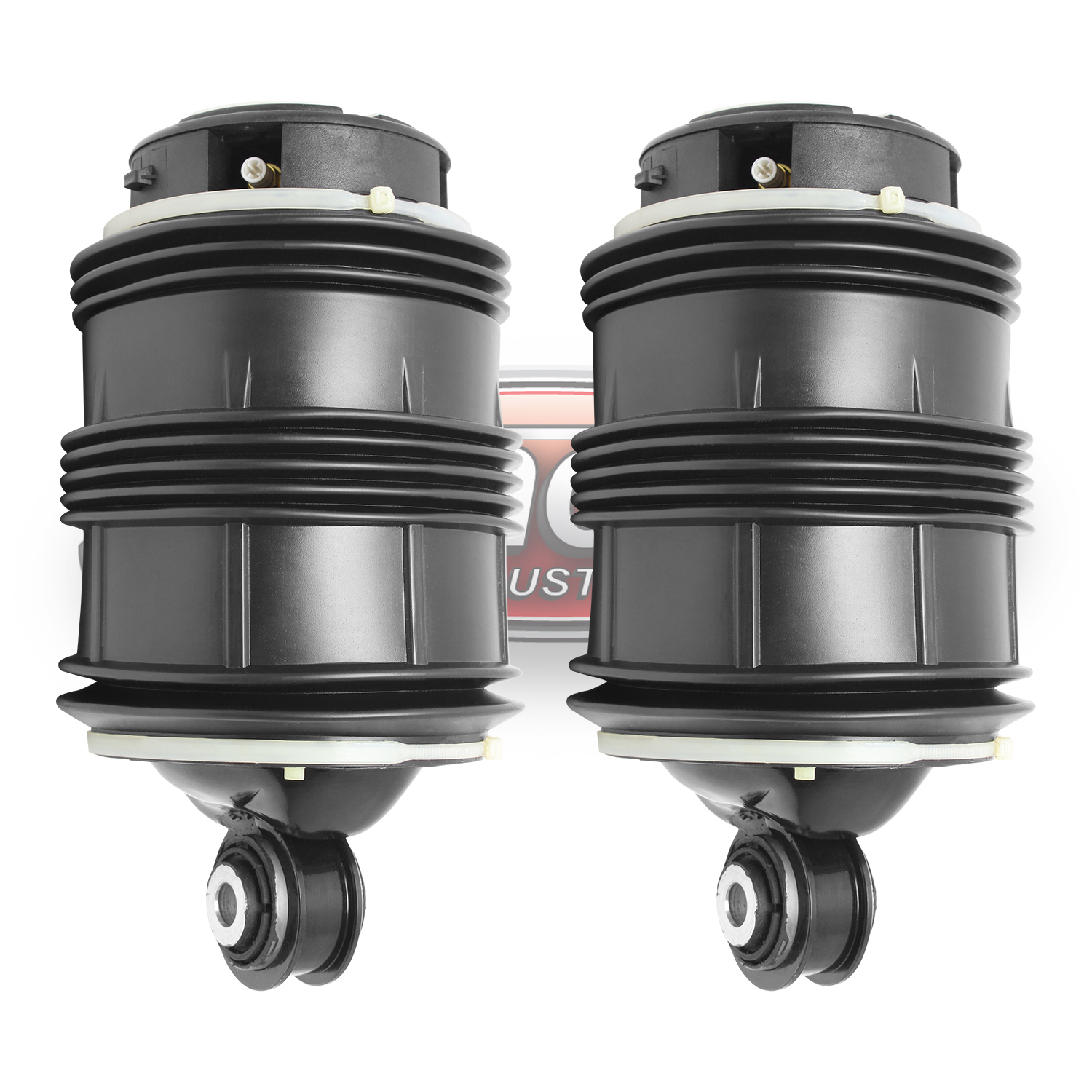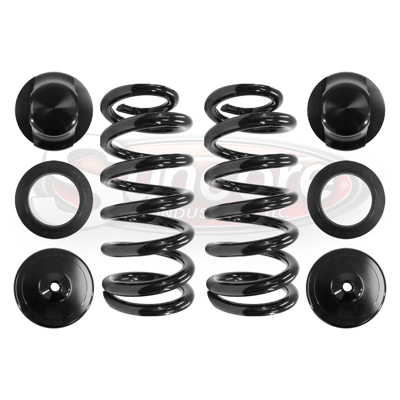The first step you should take when diagnosing your Airmatic woes is to determine which type of air ride you have. The W211 chassis was manufactured with two different types of air suspension, the standard four corner Airmatic, and the rear air leveling, common in Wagon models. Both models came equipped with rear air springs and compressor pumps, but the four corner Airmatic models included front air struts as well as the necessary electrical components and air lines. The quickest method of figuring which model you have is by checking your shifter console for a button that you can use to manually raise your vehicle’s height, which is only present in the four corner Airmatic models.
Finding Leaks
Finding one corner of your vehicle lowered after it’s been sitting for a period of time is always a disparaging feeling, and is often an indication that a leak is present in your system, somewhere. Depending on which side is lowered should narrow down your diagnostic steps. If one of the front side is low, simply spray the top mount, the airline fitting, and the metal canister at the center of the strut with a solution of soapy water, if it bubbles then you have located the leak. If one of the rear sides is lowered, raise the vehicle with the button on the shifter console before spraying down the rear air springs with the solution of soapy water. Make sure you also spray down the large diameter lines coming from the air springs to the reservoirs, as they are also known to corrode and leak often right at the connecting ports. Spray down any airlines and brass connectors you see, and check the valve block, which is either sitting above the compressor pump for Airmatic models or between the rear air springs for the rear air leveling models. If your vehicle still lowers overnight and you have checked all of the above suggestions and still haven’t found any leaks, then a stuck open solenoid is most likely the culprit. Follow the tubing providing air to the strut or spring and inspect each solenoid, or use a STAR diagnostic module to test them electronically.
Compressor Pump & Relay
Testing the compressor pump can be as simple as commanding the vehicle to raise with the button on the shifter console. If it takes longer than thirty seconds to reach the maximum height, your compressor is probably worn out and needs to be replaced. If the compressor is running more often than usual, or is running louder than normal, then this could be good indicators of a worn-out compressor pump. If your compressor is not running at all then you should check and replace the under-hood relay F74, the 40 amp K67 Airmatic Relay.
More Than One Side Low
If you are experiencing both left and right side lowered in the rear, you may have a level sensor problem. Only one level sensor monitors the height at the rear of the vehicle, which is a standard Hall effect sensor attached to the sway bar. The front has one level sensor for each side. In some instances, you can just bend the sensor back to the correct position, but it is always recommended to replace a faulty level sensor with a Mercedes OE part.
What Suncore Can Do For You
Here at Suncore Industries, we stock the full line of brand new and rebuilt replacement components for your E-Class Mercedes. From complete air strut assemblies to compressor pumps that include the suspension relay. We strive to provide you with the highest quality Airmatic components you could ever need and we also carry suspension conversion kits for when you are tired of troubleshooting and repairing the Airmatic problems. Our highly-trained technicians can answer any questions you may have!






